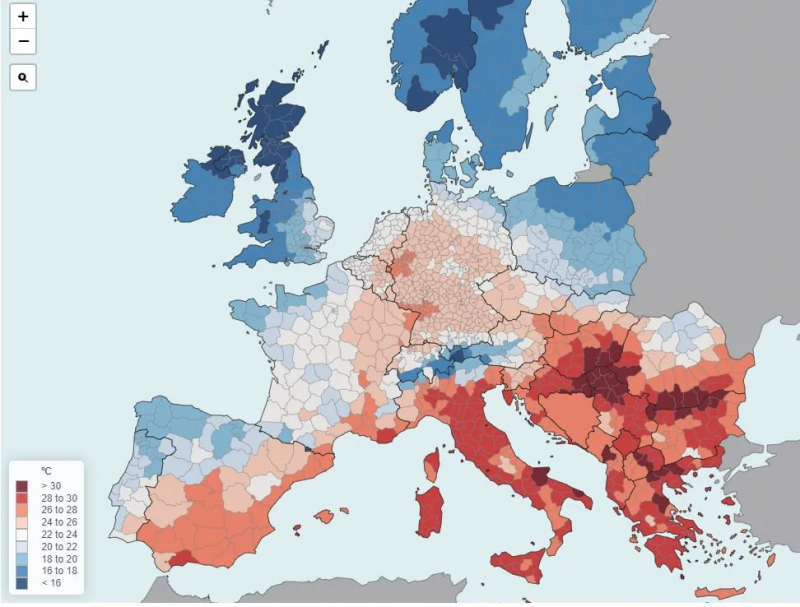
Europe’s most popular tourist destinations are among the places currently rated ‘extreme’ for risk of heat death.
Wildfires swept closer to Athens yesterday, lighting the sky above the Acropolis orange in apocalyptic scenes, when the area would usually be busy with holidaymakers.
Travel warnings to UK holidaymakers have been issued due to the heatwave sweeping Europe, where temperatures have pushed above 40°C.
An EU-funded map setting out which areas are at high risk for heat death shows the entire of Italy graded purple for ‘extreme’ today, while the north of Greece is also at the highest level.
All of Bulgaria is at the highest level, while popular cities in Spain including Barcelona and Malaga are also on high alert.
Forecaster.health, a freely accessible health warning system for 580 regions in 31 European countries, shows how some European holiday hotspots may be best avoided, or should be visited with great care and plenty of water.


Barcelona-based IS Global, which created the map, said: ‘Ambient temperatures are associated with more than 5 million premature deaths a year worldwide, more than 300,000 of them in Western Europe.
‘In a context of rapid warming where temperatures have successively broken previous records over the past two decades, it is essential to use epidemiological models to develop novel early warning systems that anticipate the effects of expected temperatures on health.’
In high temperatures, governments prepare for a spike in heat-related deaths, as bodies must work harder to stay at a safe temperature, making heart attacks and strokes more likely as well as worsening asthma and lung conditions.
These effects begin to kick in above 25°C or 26°C, with around 2,000 deaths in hot weather each year on average in England.
Heat alerts were in place here during the mini heatwave we had in July, with elderly people at risk as well as those with health conditions.
That was only with temperatures around 30°C at maximum, so when the mercury starts to push 40°C the health risk becomes much more severe.
To use the map, enter the date you want health predictions for up to two weeks in advance, as well as the population group you want information for.
The map will then be colour-coded by which areas are at risk from heat or cold deaths:low, moderate, high and extreme.
It is based on temperature records and forecasts and uses epidemiological models to quantify the risk of temperature-related mortality by sex and age group.
Erika Radford, from Asthma + Lung UK, said: ‘Hot summer weather can bring on asthma symptoms like chest tightness, coughing, breathlessness and wheezing for some people.
‘The exact causes are not fully understood, but it’s thought that the warmer air may cause the airways to narrow. Additionally, during hot weather, there tends to be an increase in pollen levels, which can trigger potentially life-threatening asthma attacks.
‘Hot and humid weather can also worsen symptoms in people with other lung conditions, like chronic obstructive pulmonary disease (COPD), especially if you become dehydrated.
To find out the data for a specific date, use the interactive map on the website here.
Get in touch with our news team by emailing us at webnews@metro.co.uk.
For more stories like this, check our news page.
Sign Up for News Updates
Get your need-to-know latest news, feel-good stories, analysis and more
Privacy Policy
Disclaimer: The copyright of this article belongs to the original author. Reposting this article is solely for the purpose of information dissemination and does not constitute any investment advice. If there is any infringement, please contact us immediately. We will make corrections or deletions as necessary. Thank you.



